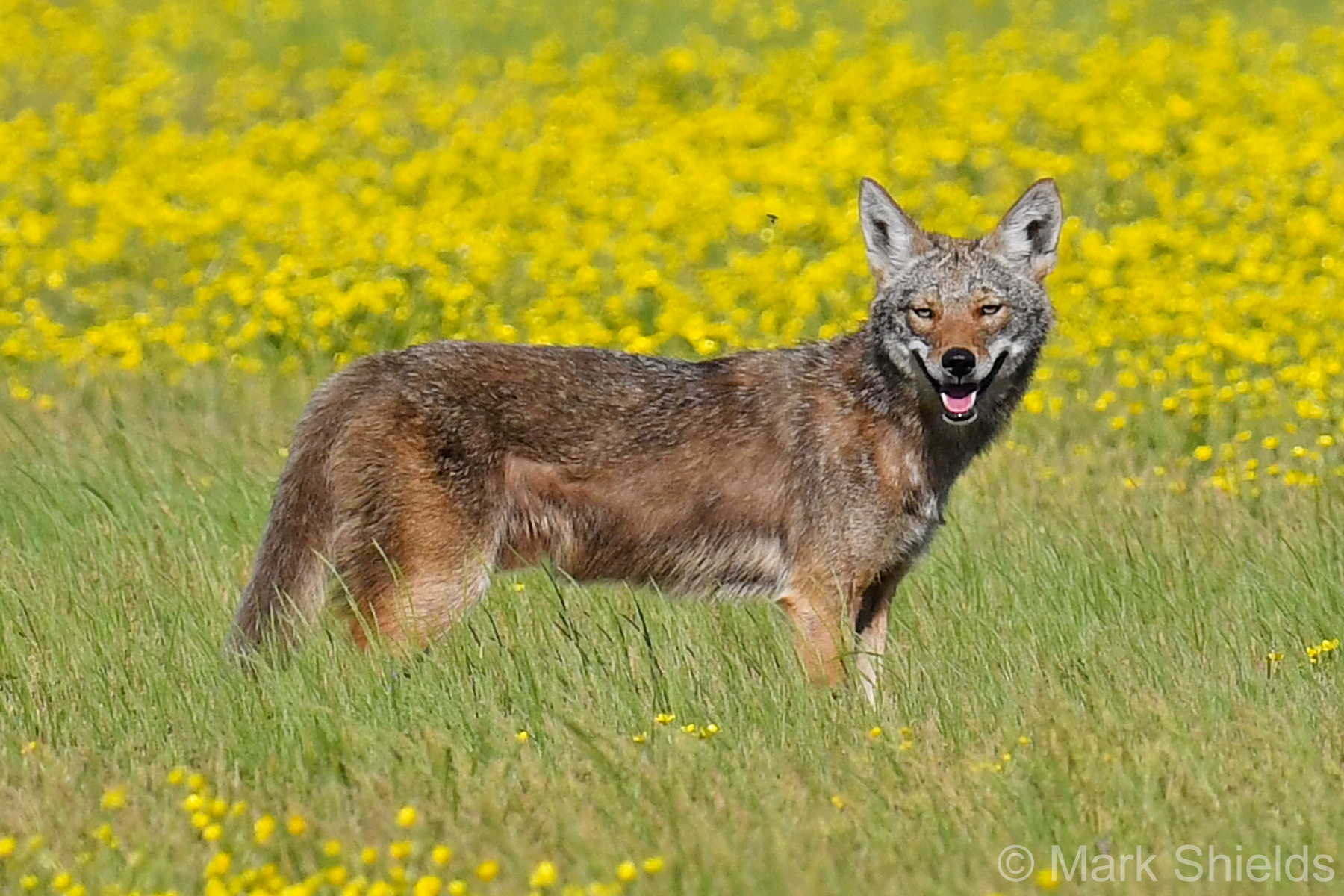|
| Distribution |
There had never been a documented record for our state prior to the mid-1980's; however, wolf biologists believe that historically it did occur in the eastern portion of the NC Coastal Plain. In the late 1980's, the U.S Fish and Wildlife Service began a captive breeding and release program in Alligator River NWR, Dare County. A few individuals were radio-collared and released, and since then, the population expanded in "the wild", to over 100 individuals, helped along with additional releases from that area. The species now very sparingly ranges west to Washington County and to Beaufort County. In the 1990's, a small number were released across the state line in eastern TN, in Great Smoky Mountains NP; however, this population declined quickly, and remaining individuals were captured.
Historically, the Red Wolf occurred from eastern TX to at least coastal SC, presumably eastern NC, and perhaps as far north as PA. |
| Abundance |
It has declined quite concernedly since about 2017. Numbers in the wild are now only perhaps two dozen individuals, and there is much concern about the future of the captive breeding/release program. |
| Seasonal Occurrence |
Occurs year-round. |
| Habitat |
Favors extensive wetland forests and pocosins; nonriverine swamps are preferred. However, wolves often feed in adjacent fields and wooded edges. |
| Behavior |
Red Wolves are nocturnal and crepuscular, though they can occasionally be seen during the day if it is dark or otherwise cloudy. They do not generally feed or occur in packs, though perhaps groups of 3-4 may be present. Usually when seen in NC, they occur as singles or at most two individuals. |
| Comments |
The most recent checklist (Wilson and Reeder), from 2005, considers the Red Wolf the same species as the Gray Wolf, because of interbreeding and perhaps other factors. However, the website for that reference directs readers to more recent lists and classifications; both the IUCN and the U.S. Fish and Wildlife Service consider the Red Wolf as a full species (Canis rufus), and thus our mammal website now reverts back to considering the Red Wolf as a full species. Also, NatureServe considers it as a species, though with a Global Rank of G1Q (questionable taxonomy).
The population in eastern North Carolina has long been listed by the U.S. Fish and Wildlife Service as Endangered, but as an Experimental Population (E-XN). The N.C. Wildlife Resources Commission, finally, around 2017, placed the species on the State Protected List, as Threatened.
|
| Origin |
Native |
| NC List |
Official |
 State Rank State Rank |
S1 |
 State Status State Status |
T |
 Global Rank Global Rank |
G1Q |
| Federal Status |
E-XN |
| subspecies |
|
| other_comName |
|
| synonym |
Canis lupus rufus |



